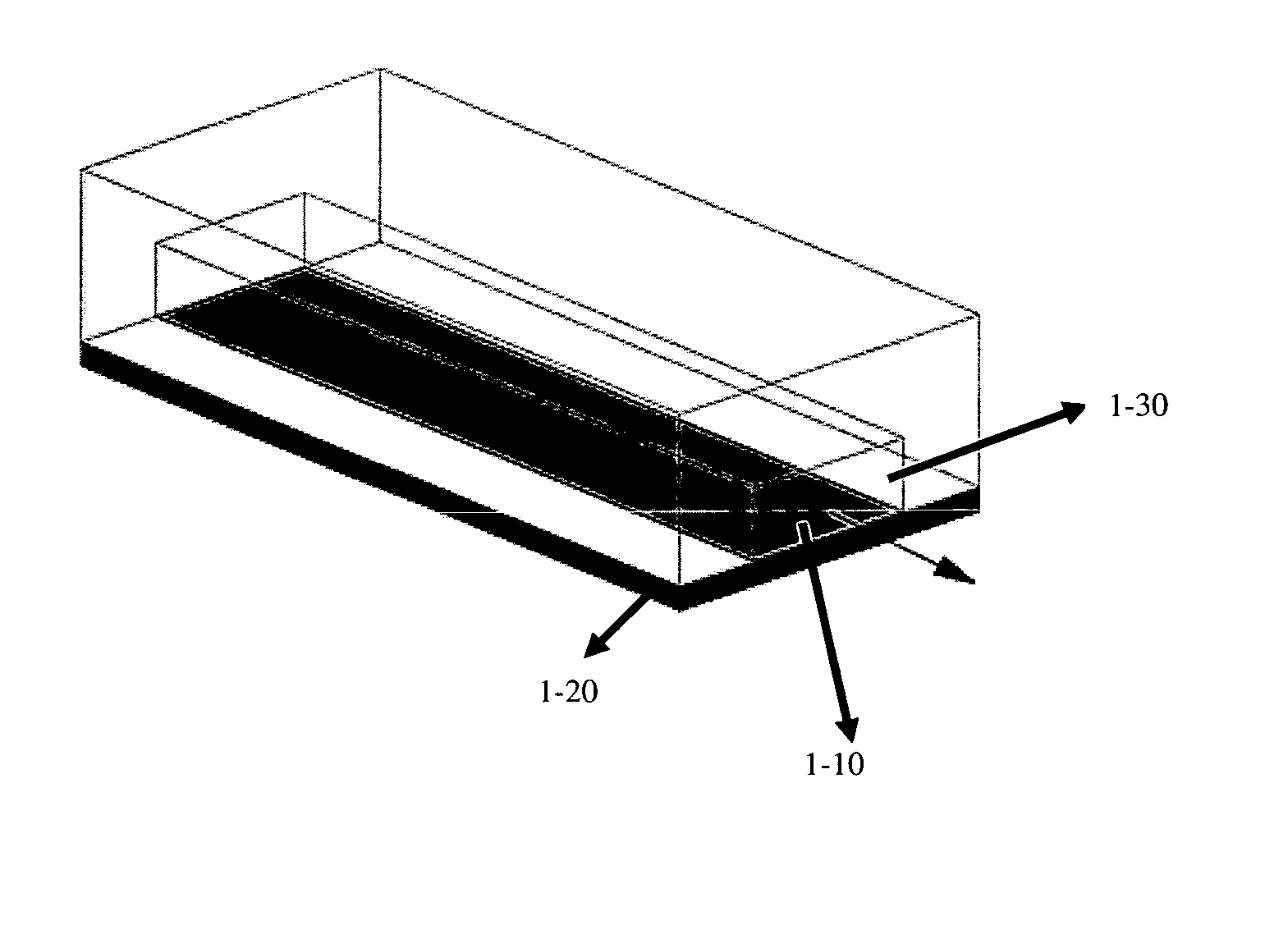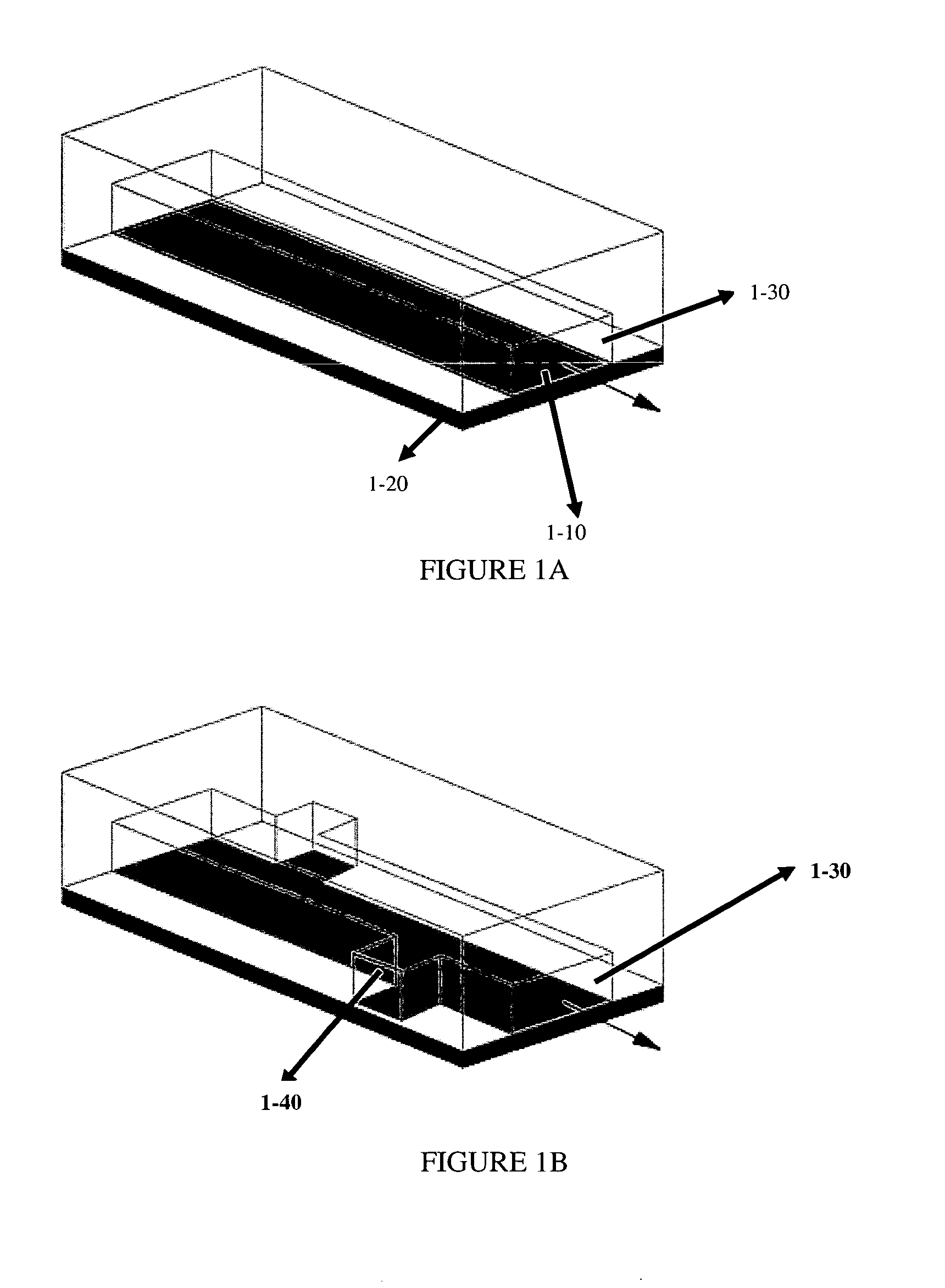Induced-charge electro-osmotic microfluidic devices
a microfluidic device and electro-osmotic technology, applied in the direction of fluid pressure measurement, liquid/fluent solid measurement, peptide measurement, etc., can solve the problems of traditional pressure-driven flow that cannot scale well with miniaturization, capillary electro-osmosis, with or without field-effect flow control, and is not ideal for certain applications
- Summary
- Abstract
- Description
- Claims
- Application Information
AI Technical Summary
Benefits of technology
Problems solved by technology
Method used
Image
Examples
example 1
General Schematic for a Device Comprising Induced-Charge Electro-Osmotically Driven Microfluidic Pumps
[0333] It is possible to create many permutations of a device comprising induced-charge electro-osmotically driven microfluidic mixers or pumps, or a combination thereof, as will be appreciated by one skilled in the art.
[0334] A general schematic of microfluidic devices for use in this invention is depicted in FIG. 1. In this embodiment, metal electrodes (1-10) are patterned onto a substrate (1-20), typically glass or silicon, to form an electrokinetic “pump”. Fluid is pumped down a microfluidic channel (1-30), which may be formed by a molded-polymer (e.g. PDMS) cap. Typical dimensions for the cross section of the microchannel are of order 1-1000 microns in height and 10-10000 microns in width.
[0335] The microfluidic channels may be straight (FIG. 1A) or have recessed regions (1-40) (FIG. 1B). In such channels designed for biological or chemical sensing, the upper surface and sid...
example 2
Circuitry and Spatial Layout for Some Devices of this Invention
[0339] The electrical circuitry and general spatial layout are shown in FIG. 2. According to this embodiment, (FIG. 2A) two background electrodes, B+ (2-20) and B− (2-30), apply an AC electric field across a single primary pumping element, P− / + (2-10), which consists of interlaced electrodes connected to B+ and B− as described further, hereinbelow. Another embodiment comprises successive positioning of the elements, for example as depicted in FIG. 2B, where a pumping element with the opposite symmetry, P+ / − (240), is positioned in the device, in a repeating pattern, for example B+, P− / +, B−, P+ / −, etc.
[0340] According to these embodiments, fluid pumps from left to right, as indicated by the arrows in FIG. 2. When the background electric field extends from B+ to B−, the P− / +pumping element causes pumping in the same direction since the induced double layer charge is predominantly positive, due to a larger surface area a...
example 3
Pumping Elements Having Electrodes of Different Heights May Increase Flow Rate
[0349] In some embodiments of the invention, the flow rate is increased by altering the geometry of the various parts, such that the slipping surfaces work together to pump fluid in a single direction. According to this embodiment, raising all the surfaces pumping in the desired direction (and / or lowering the others) serves to “bury” reverse convection rolls. If the height difference is comparable to the width of the buried electrodes, the reverse convection rolls turn over near the upper surface and provide an effective “conveyor belt” for the primary pumping flow over the raised electrodes. In this way, the reverse flows actually aid the primary pumping flow, rather than hinder it; the resulting flow may exceed that of designs where the reverse flow is replaced by flat no-slip surfaces in a planar geometry.
[0350] For example, with reference to the pumping element in FIG. 5A, consisting of planar interl...
PUM
| Property | Measurement | Unit |
|---|---|---|
| widths | aaaaa | aaaaa |
| widths | aaaaa | aaaaa |
| AC voltage | aaaaa | aaaaa |
Abstract
Description
Claims
Application Information
 Login to View More
Login to View More - R&D
- Intellectual Property
- Life Sciences
- Materials
- Tech Scout
- Unparalleled Data Quality
- Higher Quality Content
- 60% Fewer Hallucinations
Browse by: Latest US Patents, China's latest patents, Technical Efficacy Thesaurus, Application Domain, Technology Topic, Popular Technical Reports.
© 2025 PatSnap. All rights reserved.Legal|Privacy policy|Modern Slavery Act Transparency Statement|Sitemap|About US| Contact US: help@patsnap.com



